Homelessness has always been one of society’s biggest problems. Wherever wealth pops up, so too does inequality.
And that, sadly, leads to the most unfortunate of us falling into the despair of homelessness.
Such was the case in London during the 1800s.
With the Industrial Revolution taking place in the previous century and completely changing the makeup of society as it happened, London grew and grew.
It ballooned in size until, by the late 1800s, the city was facing a severe homelessness crisis.
This was the climate that led to a branch of the Christian Protestant Church forming the Salvation Army.
Founded by William and Catherine Booth in 1865, the Sally Army – as it became known – set out to help the poor and destitute in London.
With a homeless epidemic happening in their city, the Salvation Army set about to help.
Although the way they did it might strike us from the future as a little odd…
Four Penny Coffins.
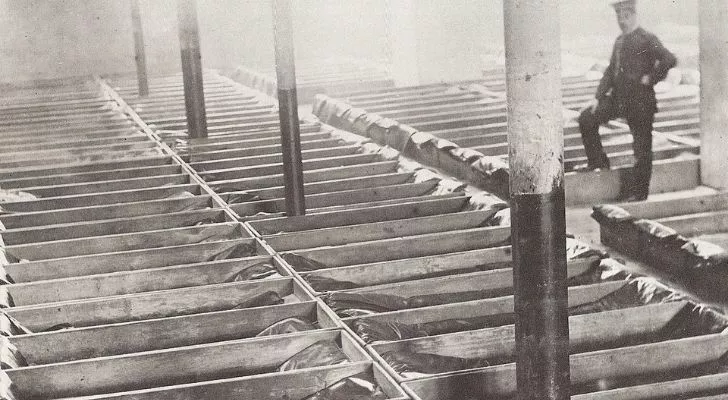
The Salvation Army’s answer to the homeless question was one of the first-ever homeless shelters ever created.
Known as the Four Penny Coffin or the Coffin House, this facility offered homeless people the chance to pay four pennies and sleep in a coffin-shaped wooden bed laid down with a tarp for cover.
Whilst the Salvation Army offered real beds at a far higher price, the Four Penny Coffins were a favorite amongst the homeless of 1800s London due to their extremely low price.
And let’s face it – for the cost of only four pennies, not many people, if homeless, would turn down the chance to spend a night laid down, in a bed, in a dry and warm hall with a blanket.
That being said, if a homeless person couldn’t afford the four pennies, then there were other… less restful… places to stay at the Salvation Army.
The One Penny no-sleeping Bench.
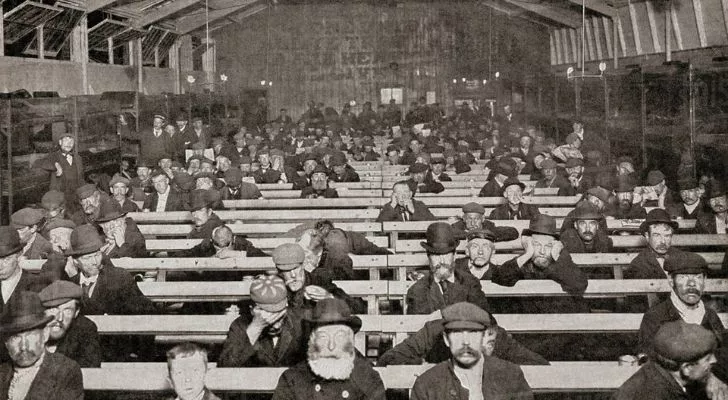
For those homeless with only a penny to their name, they were allowed to spend their night sat on a wooden bench, sheltering indoors from the cold London winter.
However, the homeless people who sat at these benches weren’t allowed to sleep if they’d only paid a penny.
This rule was even enforced by shelter employees who would prowl the bench-halls at night, making sure those who’d only paid a penny weren’t asleep.
Guests nodding off were prodded to keep them awake.
The Two Penny Hangover.
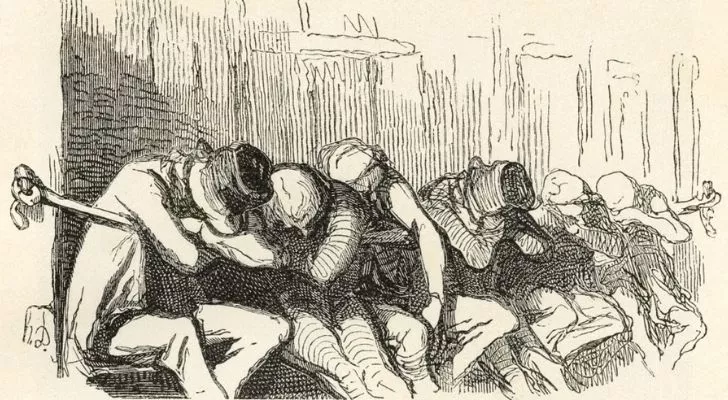
At night, the shelter’s workers would tie ropes between the benches.
This meant the homeless paying two pennies could hang over the ropes in a more comfortable half-laid-down/half-hung-over position.
Hence the name “Two Penny Hangover.”
Surely that sounds a damn sight better than sitting awake at a bench all night, right?
Wrong, the way in which you were woken up on the Two Penny Hangover is worse than your aggressively loud smartphone alarm clock ever could be.
At five in the morning, shelter officials would walk around cutting the ropes so that the homeless folk sleeping would drop down to the floor, presumably with a thud, and then wake up and leave the shelter.
What about the drunken sailors?
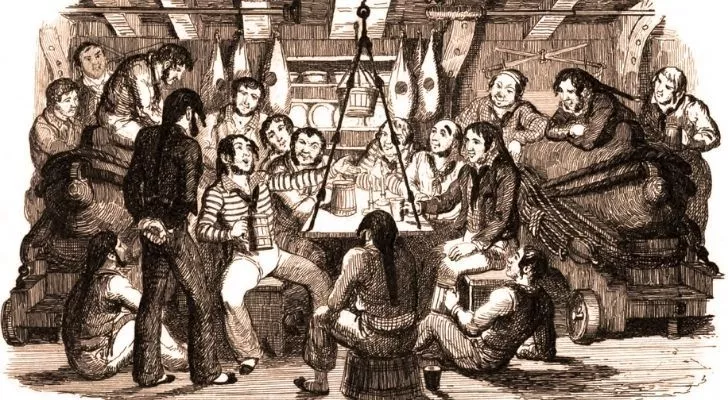
Alright, you got me; I did promise you drunken sailors in that title after all.
While it wasn’t massively widespread, there are some accounts of sailors who were docked for the night paying to sleep on the Two Penny Hangovers.
Drunken sailors who’d drunk too much alcohol and would presumably be hungover in the morning.
I know what you’re thinking – is this where we get the word “hangover” from?
No. Sadly, it isn’t.
The idea that we call it a hangover is because of literally and figuratively “hungover” sailors sleeping at the Two Penny Hangovers is really cool.
It isn’t the case and the word “hungover” actually has quite boring origins.
The term was initially used to describe an unpleasant feeling one has after a meeting or event, an emotional hang-over from what has transpired.
This use of the portmanteau first came into circulation around about 1894 and was only transplanted onto an actual alcohol hangover itself some 10 years later, in 1904.
Sad to say, sometimes the coolest origins stories are just made up!
The end of the Four Penny Coffins.
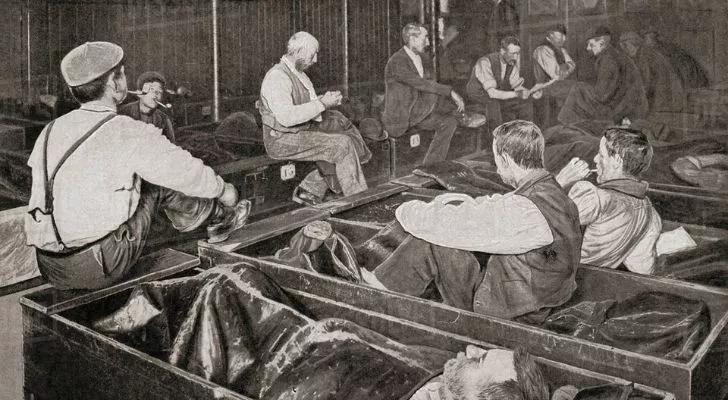
Although the Four Penny Coffin shelters seem very inadequate by today’s standards, they undoubtedly played an essential role in helping many unfortunate homeless folks survive London’s harsh winters.
When Parliament started paying out of their own pockets to help the homeless of London, the Salvation Army started closing down their homeless shelters.
Although the Four Penny Coffins were soon no more, their legacy still lives on today as one of the first homeless shelters ever created.
The Salvation Army still exists today, eventually growing into a worldwide renowned charity, helping the poor and needy all around the world.


















